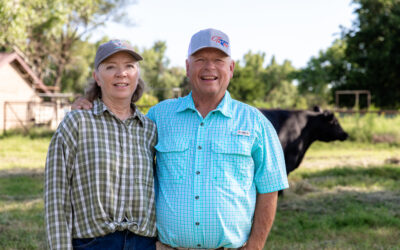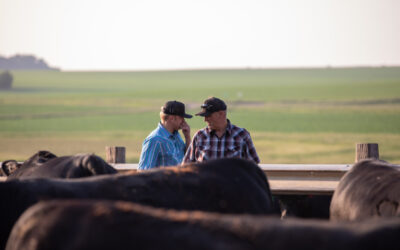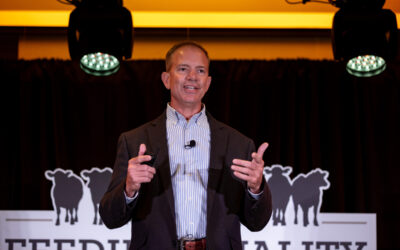
Following the Calves: Florida calves backgrounded

With two months of independence behind them, the Usher calves today are growthy, bright eyed and full of vigor.
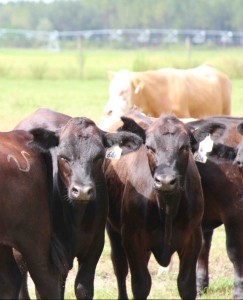
So what’s happened over the past 60 days? In a rancher’s world, that amount of time can mean the difference between a fall blunder and a spring bonus.
First there was rest. Given that these calves had been vaccinated while on the cow, Ken and his crew were able to let them calm down and get acquainted with their new living quarters for a few days before running them through the chutes.
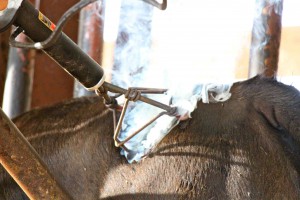
“When we’re weaning a bigger calf, we’re not as aggressive with how we feed them,” Ken says, “and we may not put a complete feed in front of them (calves received a 12% protein ration). Here we made sure to because they didn’t weigh 600-650 pounds.”
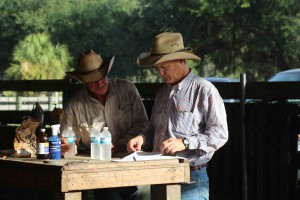
“They’ve done well,” he begins. “We’ve had some eye problems here and there as far as pink eye,” which can be expected with the time of year and flies. “We use an IGR mineral with fly control and we’ve had excellent success, but this year it seems the flies have had a little more success,” he chuckles. “We have battled them.”
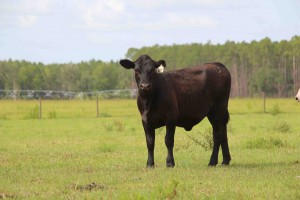
While the cattle haven’t stepped hoof on the cattle hauler just yet, Ken says he’s inclined to “send them on.” To feed that is.
Part of the decision is market driven, he explains.
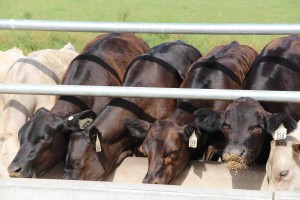
When they finish may be the main driving force of the entire cattle game.
“It’s an opportunity where we have weaned them early, let’s go ahead and put them in the market early and see how they do this year when they finish. ‘Do we have more cattle? Are all of them gone by April?’”
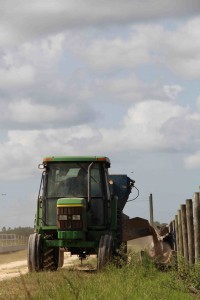
“They’re ready to go right now. It’s just the matter of us doing the leg work and having time to get them sorted, weighed and sent off.”
But exactly where will they go?
That’s an answer Ken has yet to finalize – one where seasonality holds the trump card.
“Being in the stocker business, a calf you buy in August versus one you buy in October or November, there can be a $150 difference in the value of the same animal, and it’s no different on the other end of these fed cattle,” Ken says.
So we have to go somewhere where they can finish in March and April to try to give that animal every chance to experience it’s genetic potential.”
Interested in where they’ll end up?— be sure to Follow the Calves.
Laura
P.S. To read more of our Following the Calves series, follow these links:
You may also like
Helping Hands, Helping Herds
“When I die, I want to come back as one of your cows,” murmurs a friend to Steve Zybach. Full to the brim from an alfalfa ration every day, bountiful fields of lovegrass stretched out across the Texas Panhandle—and owners who leave no ounce of cattle care up for question. The Zybachs’ motivation for this level of dedication to their Angus cattle is simply love.
System Over Scale
For Dallas Knobloch, it’s not about being the biggest feedyard—it’s about building a high-quality system that works. Today, with Tory’s wife Sadie and daughter Ivy, the Knobloch family owns and operates 4K Cattle. They feed 2,500 cattle at eight locations within 10 miles of home, manage 1,000 acres of crops and run a 125-head cow herd, all near Hills, Minn.
Data-Driven Progress and Partnerships
Discussions at Feeding Quality Forum reaffirmed the industry’s commitment to quality, transparency and innovation. With record Prime rates and strong consumer demand, producers who invest in genetics, health and relationships are positioned to drive progress and capture premiums.

